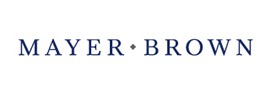Sports Industry, Teams, Leagues & Recreation Market Research
Competitive Intelligence, Business Analysis, Forecasts, Market Size, Trends, Companies, Statistics
Available Data Services: Custom Research Projects, Database Subsription or PDF eBooks
PLUNKETT PROVIDES IN-DEPTH STATISTICS TABLES COVERING THE FOLLOWING INDUSTRY TOPICS:
-
Sports Industry Statistic and Market Size Overview
-
Estimated Size of the Entire Sports Industry, U.S. 2010-2020
-
Global Sports Industry Revenues, 2020-2022
-
Selected U.S. Sports Industry Revenues: 2015-2021
-
Sports Industry, Estimated Sources of Revenue & Expenses, U.S.: 2016-2021
-
U.S. Spectator Sports, Performing Arts & Related Industries, Breakdown of Expenses: 2018-2021
-
Estimated Annual Sporting Goods Stores Retail Sales, Inventories & Purchases: 2011-2019
-
Estimated Monthly Sporting Goods Stores Retail Sales, U.S.: 1992-March 2023
-
Exports of Sporting & Athletic Equipment, U.S.: 2014-2020
-
Imports of Sporting & Athletic Equipment, U.S.: 2014-2020
-
Overview of the Media Contracts of the Four Big Sports Leagues
-
Sports Industry Employment by Business Type, U.S.: 2019-2023
Top Companies Profiled
The following is a partial listing for this industry. As a subscriber, you will have access to the leading companies and top growth companies. This includes publicly-held, private, subsidiary and joint venture companies, on a global basis as well as in the U.S.
Hundreds of Top Companies Profiled, Including:
PLUNKETT PROVIDES UNIQUE ANALYSIS OF THE FOLLOWING TRENDS THAT ARE DRIVING THIS INDUSTRY:
-
Introduction to the Sports Industry
-
NFL (National Football League): The Biggest Money in U.S. Sports
-
The Coronavirus’ Effect on the Sports & Recreation Industry
-
Broadcasting Fees, Digital Access and Investment Savvy Boost MLB (Major League Baseball)
-
NBA (National Basketball Association) Regroups Under New Contract
-
NHL (National Hockey League) Team Differences Result in Financial Haves and Have-Nots
-
NASCAR’s Best Teams Require Massive Investment
-
Television Rights Contracts Bring in Lucrative Revenues for Major Sports Leagues
-
Soccer (Football) Leagues in the U.S. and Europe Reap Significant Revenues and Sponsorships
-
New Sports Stadiums Proliferate
-
NCAA College Sports Are Big Revenue Earners
-
Student Athletes Eligible for Endorsement Fees/ Fight for Compensation and Benefits
-
PGA (Professional Golf Association) Tournaments Grow in International Markets/Golf Returns to the Olympics
-
Tennis Is a Massive Global Sport for Professionals and Amateurs Alike
-
Fantasy Sports Post Growth, Creating $3.6 Billion in Revenue Online
-
eSports: Electronic Games Become Spectator Sports
-
Sports Betting Gains Traction with Online Betting
-
Sports Equipment Manufacturers Offer the Latest High-Tech Advantages
-
Lacrosse Is Among the Fastest-Growing Team Sports in America
-
Wearable Sensors Track Exercise Data/Apparel and Shoe Manufacturers Adopt Technologies
-
Consumers Use Bike Sharing, Car Services Like Uber, Light Rail and Ride Sharing to a Growing Extent
-
Sports Agents Become Indispensable/Sports Marketing Booms in China
-
Sports Licensing Heats Up
-
Gym Memberships Continue to Rise
-
New Video Game Console Technologies and Features Boost Sales
-
Hiking, Walking and Running-The Least Expensive Sports Draw the Most Participants
-
Bicycle Sharing Grows in Major Cities, But Financial Outlook Is Poor
-
Virtual Reality and 3-D Games Open New Opportunities/Immersion Games to Grow
-
Aging Baby Boomers Will Cause Significant Changes in the Leisure Sector, Including Sports and Activity-Based Travel
-
Athletic Footwear Sales Soar/Athletic Shoe Industry Draws Endorsements from Top Athletes
-
The Vast Majority of Shoes Sold in the U.S. Are Made Elsewhere
-
Flyknit May Revolutionize Manufacture of Shoes
-
Exercise Apparel Sales Rise/ Athleisure Clothing Sales Soar
-
Nanotechnology Has a Growing Role in Sports Equipment
-
Sports Equipment and Social Media Converge
-
High-Tech, Nanotech and Smart Fabrics Proliferate
-
The Future of the Sports Industry Will Be Shaped by Technologies and Demographics
Key Findings:
A complete market research report, including forecasts and market estimates, technologies analysis and developments at innovative firms within the Sports & Recreation Industry. Gain vital insights that can help shape strategy for business development, product development and investments.
Key Features:
- Business trends analysis
- In-depth industry overview
- Technology trends analysis
- Forecasts
- Spending, investment, and consumption discussions
- In-depth industry statistics and metrics
- Industry employment numbers
Additional Key Features Include:
Industry Glossary
Industry Contacts list, including Professional Societies and Industry Associations
Profiles of industry-leading companies
- U.S. and Global Firms
- Publicly held, Private and Subsidiaries
- Executive Contacts
- Revenues
- For Public Companies: Detailed Financial Summaries
Pages: 538
Statistical Tables Provided: 8
Companies Profiled: 400
Geographic Focus: Global
Price: $399.99
Key Questions Answered Include:
- How is the industry evolving?
- How is the industry being shaped by new technologies?
- How is demand growing in emerging markets and mature economies?
- What is the size of the market now and in the future?
- What are the financial results of the leading companies?
- What are the names and titles of top executives?
- What are the top companies and what are their revenues?
This feature-rich report covers competitive intelligence, market research and business analysis—everything you need to know about the Sports & Recreation Industry.
Plunkett Research Provides Unique Analysis of the Following Major Trends Affecting the Sports & Recreation Industry
- Introduction to the Sports & Recreation Industry
- NFL (National Football League): The Biggest Money in U.S. Sports
- Broadcasting Fees, Digital Access and Investment Savvy Boost MLB (Major League Baseball)
- NBA (National Basketball Association) Goes Global
- NHL (National Hockey League) Expands
- Television Rights Contracts Bring in Lucrative Revenues for Major Sports Leagues
- Soccer (Football) Leagues Around the World Reap Significant Revenues and Sponsorships
- New Sports Stadiums Launched in the U.S./Stadium Sponsorships Offset Costs
- NCAA College Sports Are Immense Revenue Generators, Thanks to Broadcast Rights
- Student Athletes Eligible for Endorsement Fees/ Fight for Compensation and Benefits
- Golf Is a Major Sports Sector/PGA (Professional Golf Association) Plans to Merge with LIV
- Tennis Is a Massive Global Sport for Professionals and Amateurs Alike
- Fantasy Sports Post Growth, with 60 Million Players
- eSports: Electronic Games Become Spectator Sports
- Sports Betting Gains Traction with Online Betting
- Sports Equipment Manufacturers Offer the Latest High-Tech Advantages
- Wearable Sensors Track Exercise Data/Apparel and Shoe Manufacturers Adopt Technologies
- Sports Agents Are Indispensable/Sports Marketing Booms in China
- Sports Licensing Heats Up
- New Video Game Console Technologies and Features Boost Sales
- Virtual Reality/Augmented Reality and 3-D Games Create Opportunities in the Tech Industry/Immersion Games to Grow
- Aging Baby Boomers Will Cause Significant Changes in the Leisure Sector, Including Sports and Activity-Based Travel
- Athletic Footwear Sales Boom, Drawing Big Names from Athletes to Designers
- The Vast Majority of Shoes Sold in the U.S. Are Made Elsewhere
- 3-D Printing and Robotics Revolutionize Manufacture of Shoes and Fabrics
- Exercise Apparel Sales Rise/Athleisure Clothing Sales Soar
- Sports Equipment and Social Media Converge
- The Future of the Sports Industry Will Be Shaped by Technologies and Demographics
Plunkett Research Provides In-Depth Tables for the Following Sports & Recreation Industry Statistics
- Sports & Recreation Industry Statistics and Market Size Overview
- Global Sports Industry Revenues, 2020-2022
- Selected U.S. Sports Industry Revenues: 2015-2021
- Sports Industry, Estimated Sources of Revenue & Expenses, U.S.: 2016-2021
- U.S. Spectator Sports, Performing Arts & Related Industries, Breakdown of Expenses: 2018-2021
- Estimated Monthly Sporting Goods Stores Retail Sales, U.S.: 1992- March 2023
- Overview of the Media Contracts of the Four Big Sports Leagues
- Sports Industry Employment by Business Type, U.S.: 2019-2023



















